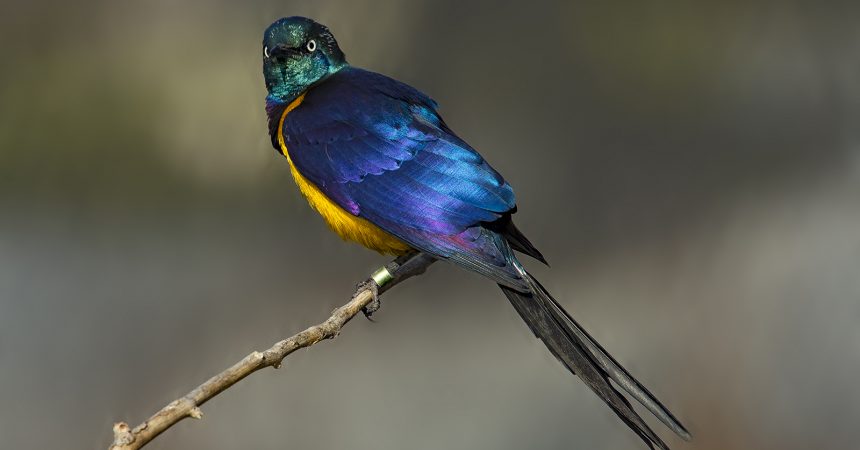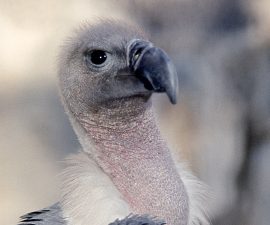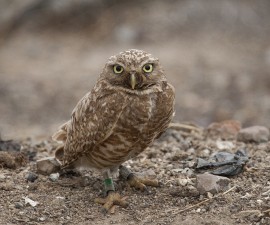When it comes to success with a certain bird species, the aviary in the San Diego Zoo’s Africa Rocks Acacia Woodland is worth its weight in gold—golden-breasted starlings, that is. Three precious chicks have hatched, and as Dave Rimlinger, the Zoo’s curator of birds explains, this is no small feat. “It’s not a commonly bred species, and we’ve had this species in nice exhibits for at least 40 years with no resulting chicks,” Dave says. “Until we moved them to the new habitat.”
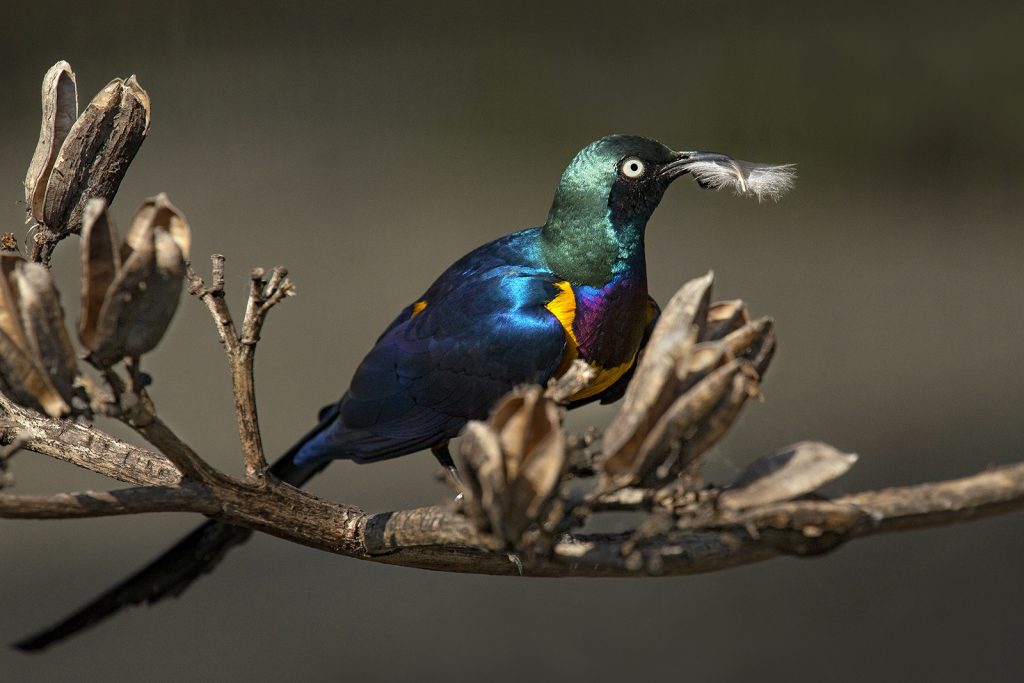
Feathering the nest, bit by bit.
Also known as the regal starling, golden-breasted starlings Lamprotornis regius are named for their striking coloration: metallic blue wings, a yellow breast and belly, a violet throat, and vibrant green head. And while its appearance is certainly noteworthy, the golden-breasted starling has also garnered a reputation as being a bit complex—at least when it comes to reproduction. The Safari Park has successfully bred the species in an off-exhibit habitat, and Zoo bird keepers have hand-reared those eggs to adulthood. So why have the Zoo’s golden-breasted starlings had so little luck with the birds and the bees? Dave believes their current success could have something to do with the design of this specific aviary—it makes the starlings feel at home.
“Golden-breasted starlings are native to Ethiopia, Somalia, and Tanzania,” Dave explains. “They are from arid, dry, open areas like savannas, shrub lands, and open bush. And that’s exactly how we designed the Acacia Woodland aviary. The nest is right out in the open, and it’s apparently just how they like it.” The Zoo’s golden-breasted starlings moved into their new aviary in late 2017, and got right to work. “They nested in the Acacia Woodland exhibit sooner than expected,” Dave says. “The three chicks hatched in mid-June of 2018—in less than a year in the new habitat. It’s exciting.”
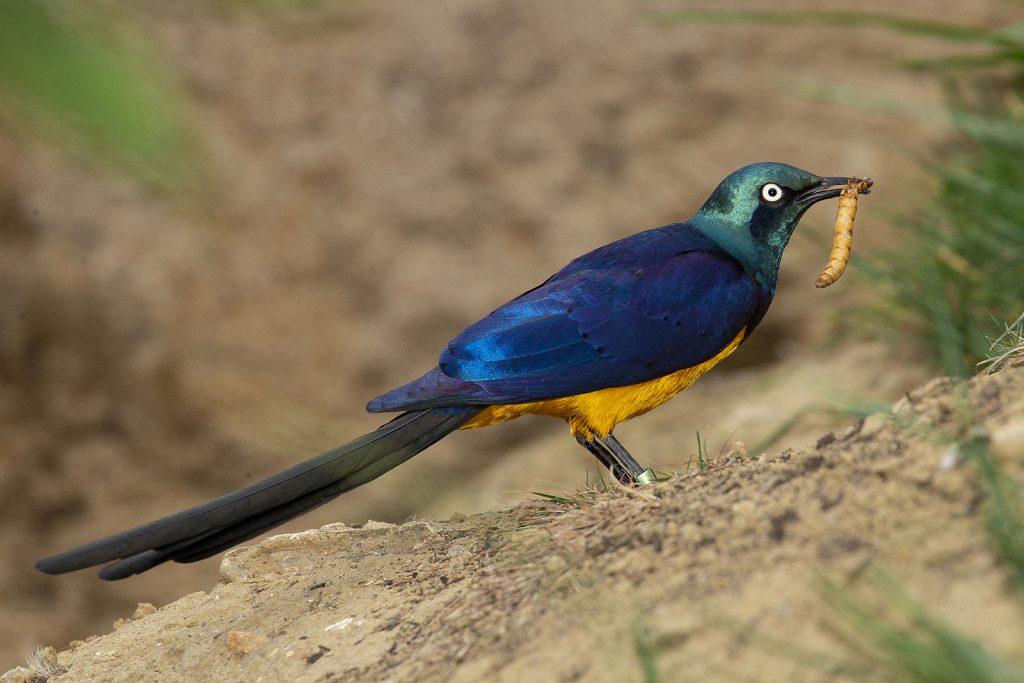
The adult male starling brings food to his mate on the nest.
And it appears the “egg-citement” may be on a roll. Now that the three chicks are basically teenagers, it’s possible they will be helping around the house. Golden-breasted starlings are a cooperative breeder, meaning the older chicks help take care of the younger ones. While the adult female does all the incubation, the male brings food to the nest for the female, and once the eggs hatch, for the babies as well. The older siblings also contribute food. “The parents in Acacia Woodland are already back to nest,” Dave says. “We’ll see if the older chicks help out.”
Dave is cautiously optimistic that more golden-breasted starlings could be in the Zoo’s future. With the knowledge and resources to make habitats as naturalistic as possible, our curators, keepers and animal care experts can help bolster the population numbers of species that could really use a boost. Sometimes, design is the key. “Build it and they will breed,” Dave says. At least in this case, the future looks golden!
Peggy Scott is an associate editor for San Diego Zoo Globa. Read her previous blog, Creatures of Note: Songs with Animal Names.

